

Interview with Todd Marshall
By Scott Stilphen
(2014)
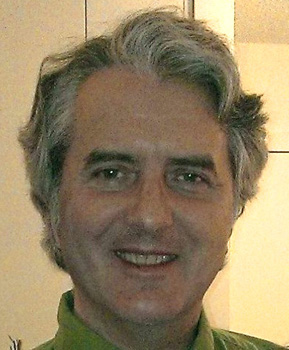
Todd Marshall was a programmer and engineer at the famed James Wickstead Design Associates (JWDA) and was responsible for most of the sound effects and music in their games. He talked with me about his experiences in the video game industry in the 1980s and of developing his 'warped' sense of music.
Q: What’s your educational background?
Todd Marshall: I started college as a special education major at California, PA. I ended at Rutgers with a Bachelor Science Computer Science (Livingston). I was a musician initially; jazz trumpet, rock bass, folk, etc). I learned music with and from some famous people, as a kid, and performed as a rock star and folkie, in high school, in Princeton, N.J. My year of graduation was 1978. From 1978 to 1982, I worked at a word processing company, Vydec, from which most JWDA personnel started, in the same geographical location, and they were mostly hardware oriented, except for myself, and the artist and a few others.
Q: I'm not
familiar with Vydec. What were they involved with?
Todd Marshall: Vydec was an offshoot of HP, started by some HP people, then later sold to Exxon as part of Exxon Office Systems Company. Exxon also bought Zilog (developed one of the first processors the Z-80), Quip, Quix and perhaps another one. They were trying to put their money into being another IBM. This was the 1970's.
Vydec was the most popular word processing machine in existence then. It was used by law firms mostly to type and print pages of documents and store them on the computer; in the 1970's, that was absolutely novel.
Quip and Quix were early Fax and transmission companies. Vydec hired engineers in northern N.J. (Tom Heidt, Wes Trager, Roger Booth) who worked on the next generation word processors/ personal computers that were based on vector displays and Z-80 processors. These engineers (plus myself) moved en-masse to JWDA around 1982 and replaced Gary Kitchen etc. as Atari VCS game programmers. The Kitchen brothers probably left for greener pastures, to start their own companies, etc. in California which in retrospect was very smart! One of them was mentioned in the Steve Jobs biography.
Q: What inspired you to go into game design?
Todd Marshall: I was a programmer. I learned assembly language, and I was a musician. To me, I think game design means real-time GUI, which is a great area to work in, but it can be frustrating! Of course there's also the psychology aspect, education, and fun. But I just fell into it because of my audio background.
I also played lots of pinball in college, and in the early 1980's was when Space Invaders, Pong, etc. arcade games were getting installed. One of my favorite games was Qix, and vector display games like Star Castle.
Q: Were you mainly responsible for creating the audio effects and/or music for the games?
Todd Marshall: Yes, I was a musician so I worked on audio software and composition/music for everything from Word Zapper to Little Computer People. Audio effects are often created by playing musical tones too fast for the ear to distinguish, around 20 times a second or so.
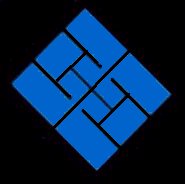
Q: How did you hear about JWDA? When did you start working there? When did you leave?
Todd Marshall: Most personnel (Roger, Tom, Wes, and myself) started at Vydec, and moved when Vydec had problems. JWDA was a local company (much like a startup today, and Jim Wickstead worked on his connections!). I left in 1988, right before Nintendo became big. I was 35 years old then and needed to quit smoking and get myself together! (a little burn-out; life ultimately is psychological!)
Q: What was the development process like?
Todd Marshall: (VCS) Using a 6502 assembler and some kind of text editor on the Apple II with a cart emulator plugged into a VCS to share memory. Write (or read?) to memory to access registers like scan lines, vertical sync, audio chip controls. Count CPU cycles (1 MHz per cycle). I think there was some interlacing like in Q*bert's Qubes (could not rotate horizontally oriented bit maps so colors had to flash to simulate that). I also discovered that I could repeat audio after the main sound at low volumes to emulate room, reverb, echo types of effects, but the games that used those most heavily, Tarzan and Pink Panther, didn't make it into production.
JWDA used what's called action register programming - set an action and jump on that - because the code ran during the vertical blank interval, and a tiny bit of code could run in the horizontal blank/sync.
I was happy that we had a good artist that could direct the programmers, I could make audio as I liked it, and we could play games heavily. However, personality and psychology always interfere with great technology. There were some egos back then too! Can you imagine people chain-smoking at their desks at work, in elevators, in movie theaters? Getting smashed on alcohol at lunch and returning to work? The 80's was a creepy decade, too.
Q: Were the titles you worked on assigned, or chosen by yourself?
Todd Marshall: Mostly assigned, as it was a small company. People had their special projects- Sylvia Day had Mouse Trap and Gopher, and Wes had Commando Raid.
Q: Tell us about the games you were involved with.
Todd Marshall: Word Zapper (Vidtec/U.S. Games, 1982):
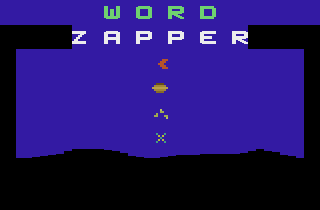
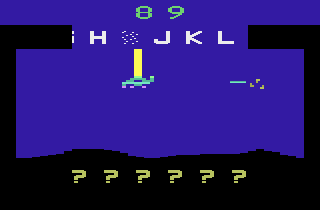
The Kitchen brothers (at least 2 of them I believe - Dan and Garry) were involved early on with U.S. Games but left after Space Jockey and Sneak'n Peek, and JWDA was hired to handle software development for U.S. Games. The first games JWDA did were Word Zapper, Commando Raid, and then either Gopher or Mouse Trap.
When I was hired by JWDA, Word Zapper was my first audio project (my first game project). You can see that the gameplay was based on the Space Jockey concept. It used simple cyclic audio tone generation algorithms, which is more algorithmic than audio that is written down. This was a better way to make noises that are interesting, and should be used more frequently. For example you have a fixed set of tones (the Atari VCS has a limited range of discrete pitches) and you write loops that cycle at different intervals and play those cycles fast, not writing them down per-se. This technique is as opposed to having music composers and designers create sound effects and just play those sound effects over and over. You can also add alternates and select different ones, but it is the same thing.
When we programmed the Atari VCS and other systems prior to the Nintendo NES, the software engineer could write algorithms that directly
produced sound effects and music, or graphics. The programmer would write graphics and tones directly in their code, playing usually some custom language that outputted noise or pixels directly. The audio has two channels, and when a sound is played through both channels simultaneously - either intentionally or during gameplay - the sound can be enhanced and much stronger, or less frequently, they can cancel each other, and the sound becomes barely audible. This gives the VCS
added audio quality and interest, boosting or lessening the sound because of the two channels in a random or controlled fashion, especially with some of the low notes or noises you can hear that. And it can be more interesting/fun than when everything is written down!
Alternatively, it involved coding optimization, counting time cycles in assembly code, making code run fast enough so that there were no time glitches or pauses, no graphics flickers or glitches, and no game stuttering or pausing. In audio, you could hear clicks buzzes or drop outs or other errors. Eliminating these problems was a system programming skill as well as the art of the sound, graphics, and gameplay itself. I have spent more time as a code optimizer. I started
speeding up buffering of data from floppy disk tracks and sectors, writing and thinking about code that is just too slow, threading issues, etc. At Sesame Street it was mainly getting Windows code to perform in real-time, compressing and running graphics without delays, multitasking, etc. Most time was spent eliminating delays between user clicking and the animation. At Sesame Street those were called 'screeching cats': a toddler clicks on something and it screeches like a cat.
But the art itself is produced solely by artists and musicians; programmers these days rarely write algorithms that make art. When they do, it can be psychedelic types of art. These days the optimizations seem to be at the mathematical level in 3-D and it also exists in high speed trading.
Q: U.S. Games first 3 releases (Space Jockey, Sneak'n Peek, and Word Zapper) were released under the trademark name "Vidtec", although "U.S. Games" was a registered trademark, and all their releases had a "USG" star logo on them. Vidtec was an independent operation backed by the West Coast-based division of Quaker Oats. It was later coupled with another Quaker Oats division, Fisher-Price under the U.S. Games name. I'm curious as to why Vidtec is credited for Word Zapper. You mention Word Zapper used the same concept as Space Jockey. Did it actually used some of Space Jockey's code?
Todd Marshall: I think Word Zapper, written by Henry Will IV, used pre-existing Space Jockey code in creating some of the enemy ships that fly sideways as model code, and I think you can see the similarity.
Commando Raid (U.S. Games, 1982):
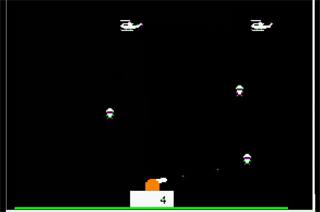
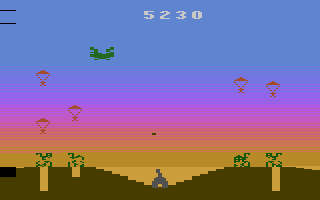
This was Wes's first game, and I remember working hard on it with him. For quite a while, he and I were buddies. It was his big show and he figured out what sound to use for the helicopters.
Mouse Trap (Coleco, 1982):
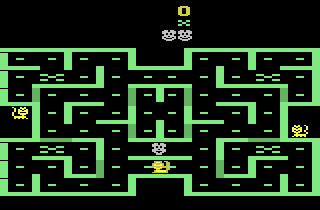
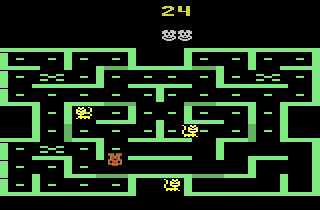
Sylvia programmed this and was very possessive about it. She and Robin McDaniel Ballweg were antagonistic over the graphics; Sylvia was possessive about doing it 'her way'. Sylvia was a great woman programmer - a pioneer. One of the first female game programmers, and one wonderfully tough cookie! She probably did most or all of the programming for Gopher and Name This Game.
Eggomania (U.S. Games, 1982):
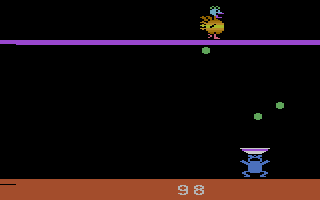
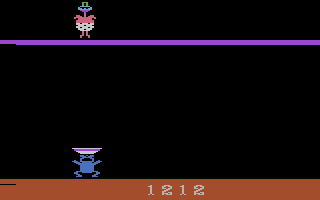
This was a Kaboom!-style game with lots of art. Most games took 6 months or so. Henry programmed most of these. I had to make low-memory music; looking back, it was too simple, we had to design a time-based language for characterizing tones, pitch, duration, repeated noises like the bird bleeping. I spent time composing and I had another trick I used.
Tones were supposed to be fixed on 60Hz time frames, and I varied the durations a little to add dramatic effect. This drove the sound guy designer at Activision crazy; he wanted the music exactly perfectly timed, and I would speed up or slow down a little. I wanted it 'warped'! The timing is based on the 60 hertz refresh rate of the raster beam frames so a piece of music might have a 'beat' of maybe 25 (a bit faster than 2 per second) for the Beatles' “She Loves You”. So, for some beats I might use 24, other beats 26, thus warping the tempo, for dramatic effect, but sounds 'warped' to some people who might be bothered by inaccurate timing. This is just something that could characterize my music. So this person who interfaced with JWDA (was his name Warren something?) got upset and tried to get me to stop doing it, if I remember, on Little Computer People, or maybe Tarzan, whatever. For example “15 men on a dead man's chest yo ho ho and a bottle of rum” the note durations are not exact. I apologize for playing the same short tune a million times. It's interesting how a very simple tune might be more bearable to hear over and over, rather than a more complex piece of music.
Squeeze Box (U.S. Games, 1982):
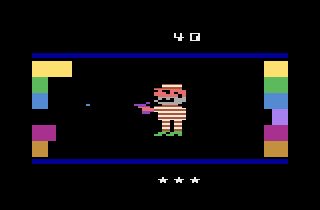
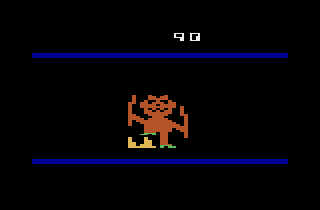
This was fun, as I remember Jim working on the game play and being proud of its humor. The concept is based on some movie where the walls close in (Ed: This is an old entertainment trope that goes back as far as Edgar Allen Poe, and was most famously implemented in the trash compactor scene from Star Wars). Kind of symbolic also, but an original idea. Getting the gun to fire properly was a challenge for Henry, if I recall. The music has that 'warped' quality. Also, the chromatic modulation is fairly effective as an infinite continuing increase in stress levels. I showed this game to my kid and he burst out laughing. The cigar chomping guy with the gun, and especially the end in hell as a devil, are great animations from Robin.
Name This Game (U.S. Games, 1982):
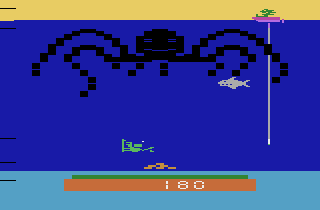
Back then, doing a game was very hard! It was all Assembly language and crammed into raster beam architecture. This was more complex (complex tentacles, and action both vertically and horizontally), with lots of strife and fights over things like whether the man who is being chomped by the shark should bleed red ("NO!" says the artist). It's a bit more complicated than Kaboom!, but it's essentially a variation on the same theme. It's the same with Eggomania, where you can shoot up sometimes, rather than just having things dropped down on you. Robin mentioned she wanted blood from the shark's mouth, and Jim nixed it saying, "Robin ,it's a game for little kids.".
If you look at Eggomania, Name This Game, Little Computer People, Pink Panther, and even Return Of The Jedi Death Star Battle, and others, (her first was Squeeze Box), you can immediately recognize Robin's low-rez characters and art. It was a strong expression of her personality.
Q: This game had a slew of tentative titles attached to it. An interview with Ron Dubren in the May 1983 issue of Electronic Fun with Computers & Games discusses some of them. We've also seen it referred to elsewhere as "Galleon's Gold" (on Amiga's Power Play Arcade #2), "Guard of Treasure" (in VideOlivery ads), "Guardians of the Treasure", and "Guardian of the Deep". A prototype also exists labeled as "Octopussy". At some point U.S. Games decided to let the public name it, and offered a $10,000 dollar first prize to the person who could come up with the most original name. The deadline was April 30, 1983. Do you recall if a winner was ever chosen?
Todd Marshall: I thought the winner was “Octopus” but I don't really know that.
I don't think Ron Dubren programmed Name This Game/Guardians/Octopus at all. I don't remember him designing it. Ron Dubren
wrote a book about Centipede. He might've helped with Little Computer People.
Ron Dubren was kind of a self promoting wizard. Perhaps he designed the -original- concept for Name This Game but working at JWDA, we all had our say in developing games; it was a group effort there. However, people always try to take credit for everything. This is to be expected in a field like games: rife in egos, the most creative are not usually recognized; the most self-promoting people usually -are-. That's how the world works. But Ron was a pioneer in game
play analysis and helped with design problems.
Gopher (U.S. Games, 1982):
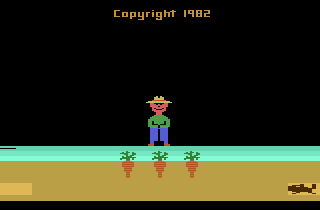
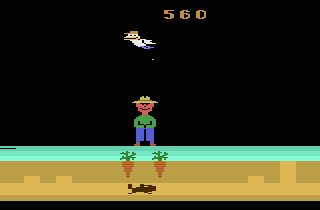
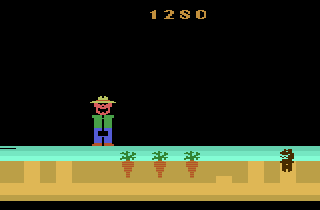
Gopher is kind of interesting. This is another one I did music and sound effects for. I'm sure Robin did graphics for that game, but with some arguing from Sylvia.
Q*bert's Qubes (Parker Bros., 1984):
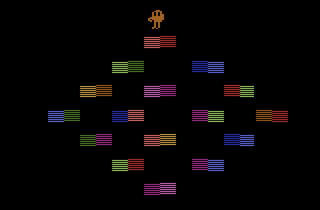
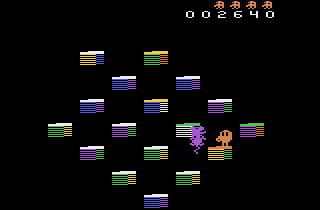
This was my project, and it was very hard figuring out how to do a matrix of 4 cubes in space like that where each cube could rotate with those other things jumping around freely. The difficulties of how many cubes in the dimension, and how to display sprites with the cube's side colors, were probably helped with suggestions from Henry who had the clearest head in the group. People often collaborated, so I might have gotten some help from Henry, Roger, or Wes, but it was my programming and responsibility. JWDA did the VCS and PCjr versions, and probably the 5200 and C-64 ones as well, but I don't recall all the ports, specifically. Roger wrote Qbert's Qubes on the IBM PCjr.
Q*bert's Qubes was also the first game to my knowledge that used my reverb technique in a simple manner, because I had just discovered it. There was also a long process involved with figuring out how to simulate pre-existing noises on the VCS audio chip. Making a development system for that which could save the current state of the noise was not easy, and which could be continually improved with new features, and "parameterizing" time-based changes for sound.
The Reverb technique I discovered and used involved playing the tone after it is finished, at a low volume, and repeating fast volume changes (the reverb or echo 'decay') to simulate echoes of different rooms. I have not listened to Pink Panther yet to see if it is there, but it was heavily used in Tarzan. It should be in Little Computer People, but I'm not sure about that because it was best on the VCS for some reason, and Little Computer People was developed for the C-64 first. I am biased when I say the VCS had the best audio (sound quality). How the Stella emulator simulated the 2600 audio chip is a miracle.
Star Wars: Return of the Jedi - Death Star Battle (Parker Bros., 1984):
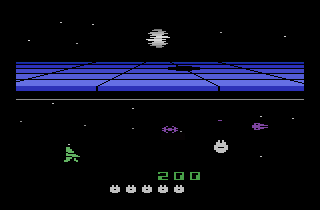
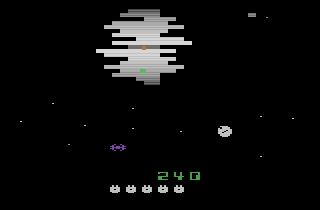
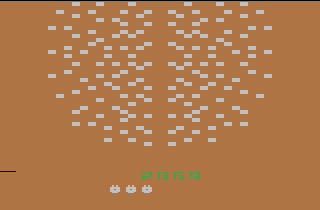
I remember that we had a lot of freedom and leeway to redesign things until the 'client' was happy with it. Too bad I never got to travel to California! A lot of development went into making the holes, designing the hyperspace sequence, and the death star battle and how it blew up. This was another example of synthesizing pre-existing noises, such as R2D2's whistling (I did the best I could!). That was a game we worked hard on, and it shows off the warmth quality of the great Atari VCS sound chip.
Smurf: Rescue in Gargamel's Castle (Coleco, 1982):
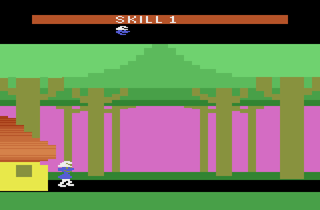
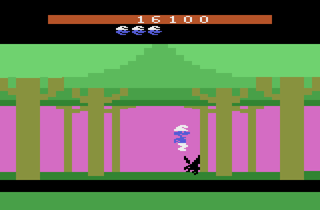

This was Henry's first big project after Word Zapper. I worked on the audio and music. It was his first experience doing a multi-screen game.
Q: A prototype version of this has different music at the end, when you rescue Smurfette (video below). Do you recall anything about this?
Todd Marshall: Hey that's great, it has my "Cherokee" music. Is that in the real game?
Q: No. The released version has the same theme music (by Hoyt Curtin) from the cartoon show, and 3 different variations of Aaron Copeland's "Appalachian Spring" (link).
Pursuit of the Pink Panther (NAP/Probe 2000):
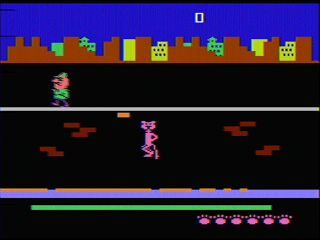
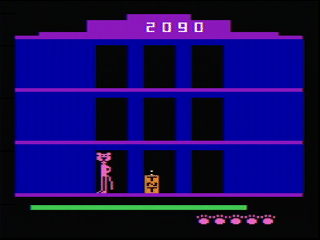
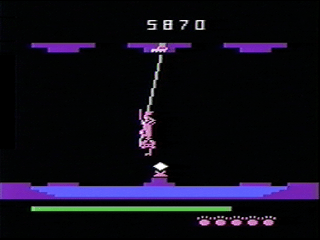
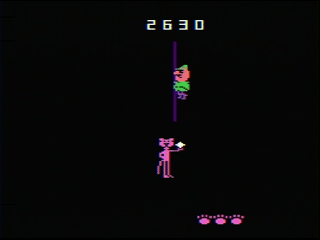
This was all done in-house with approvals and tons of work, which was all for naught because it was a custom high-RAM cartridge which was never produced. Same thing with Tarzan. Jim (and probably Tom with hardware design) developed a custom cartridge or chip that had extra banked RAM and ROM (Ed: Called the "RAM/ROM" chip. See this article for more information.). If I remember correctly, Roger did the programming. It was likely his first big game project, and he later did the PCjr version of Q*bert's Qubes, and maybe some Montezuma's Revenge ports. All I remember is working on the swinging, and doing tons of sound effects and music. Robin did the Pink Panther and Inspector Clouseau characters, as well as the green dog and other art.
After seeing your video, I totally forgot about the Kaboom!-style level. We probably "dumbed it down" for the game. Any time there is something falling and you are below catching or trying to avoid being hit, it's a Kaboom-derived game. The sequence in Pink Panther where you catch bricks does that.
Tarzan (Coleco):




Tarzan was a VCS game that Henry, Robin, and I spent endless hours working on. It was a flying, scrolling game and I did a lot of advanced sound for that one. This was our answer to Pitfall! by David Crane, and it used the custom "RAM/ROM" cartridge JWDA designed (Ed.: 3 prototypes were later found. All 3 share the same version of the code, and they don't require the special RAM/ROM chip that was used in Pink Panther). I recall reading Henry's notes that the game's design had a gorilla in a cage who Tarzan rescued. Henry probably remembers the plot.
Frogger (Parker Brothers, 1984):
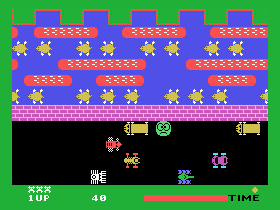
This was my project, learning to program the TI-99/4a processor for this game. Not much to say about it except it was fun slowing down the frog-jumping sound from the arcade, to figure out what musical tones it is composed of, and fun making an exact replica of a pre-existing arcade game. I don't recall us doing any other games for that system. Here's some internal notes about developing for it.
Garry Kitchen's GameMaker (Activision, 1985):
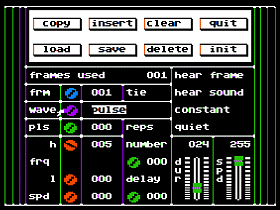
I did lots of audio software for this on the Apple II that involved varying the timing of only 1 control on the Apple II: speaker in, speaker out - no in-between! You had to count CPU cycles between speaker in and speaker out. If you vary the pulse width while playing 1 note, you make buzz-tone (fuzz box) type effects with the speaker. And counting CPU cycles to make musical notes. That was quite a challenging software task, creating delays between speaker pulses to make correctly pitched notes.
Little Computer People (Activision, 1985) also known as "Pet Person" and "Alpha":
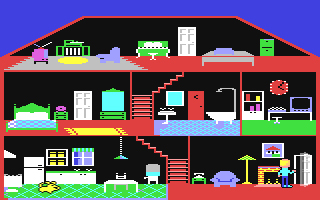
Q: I’ve always attributed this game to David Crane, but a poster (that I'm presuming came with the game) offers a very simplistic "history" of the game's development, and mentions JWDA, as does this Activisions newsletter. What was JDWA’s involvement with it, and what system was it originally developed for?
Todd Marshall: This game involved total dedication, tons of work and music, and later, chaos. JWDA
developed the initial game and software for about a year, before Activision purchased it lock-stock-and-barrel and Crane started redesigning it. He did no programming for it originally, and for 90% of its coding, design, and development, I think it was a collaboration of mostly Jim, Robin, and maybe a few other people like Henry and Roger. We worked on it extensively, and developed the concept, art, and programming for a year before Activision bought it. As I recall, we called it Pet
Person since the original idea was for it to be a pet you bought just like buying one in the pet store. This is why the person gets sick without food and attention. I programmed the piano playing so in my mind the improvisation was a major concept, and we added little things like him tapping on the glass monitor to get your attention, etc. I think we originally thought of it as promoting social skills and was disappointed when Activision turned it into a card-playing gimmick. Our idea as I
recall was, you learned to help him with house chores, maybe he himself got a pet dog, etc., perhaps like a doll for boys and girls (btw, the dog in the game is a portrait of Robin's Westie).
JWDA worked on the game for most of a year. In the end, he sold the product to recoup his investment and make some kind of profit. What happened after that? I don't really know but a lot of work was replaced. All of the gameplay in the original version dealt with interaction and none with playing games. There were no card games in the original version. The card games were added by Crane and company. At first, his redesign consisted of adding 'playing cards'. He must've been into card games or
something, or he felt the need to add some kind of 'game' to it. However, I understand now that there was some psychology behind the card-playing idea.
The music I wrote for Little Computer People had a large set of alternative measures for the guy to play on the piano in a blues type of progression so that it simulated some improvisation, but I see that Crane removed all of that when they took over the game. I guess Crane replaced ALL the sound effects and music as well as some graphics and gameplay, so it'd be very cool if someone had the pre-Activision version with the ORIGINAL, real music! I doubt it can be reconstructed, but perhaps some assets still exist.
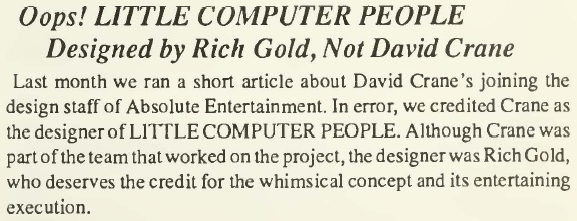
Blurb about Little Computer People from the February 1989 issue of Video Game Update.
Q: In an interview with author Tristan Donovan, Crane mentions Activision bought Pet Person from Rich Gold. The LCP poster also mentions his name. Crane goes on to basically dismiss Pet Person as nothing more than a non-interactive fishbowl or computer-based pet rock, but on the C-64 Wiki site, quotes from Crane state the idea for LCP (not an actual program) was bought from an outside developer, and that "the first plan was to develop a kind of aquarium, without user input. After I rewrote almost half of the program code and integrated additional interactivity, the product was finished."
Todd Marshall: Either Jim sold the Pet Person to Gold, or Gold acted like an agent or partner. He might've been a friend or industry contact to JWDA or the creative inventor of the game, and we were the implementers. Gold wrote a book called "Plentitude", which was based on his work, and it DOES sound like the Pet Person project, which is an idea that could've inspired this well-known George Carlin "stuff" routine. The Pet Person originally spent his time rummaging through his 'stuff'. So, it appears that Rich's Pet Person was a realization of his theories, and since it was not projected to make much money, he sold it to Activision/David Crane.
Crane re-thought the philosophy and changed the game. Pet Person was not a pet rock - it was a study of 'stuff' and people's activities in their house. Crane's re-imagining of the game was a step backwards in terms of creativity. I care about art, music, creativity, story, personality, etc, and that was destroyed in the Pet Person/LCP situation, but I should not criticize! It's hard to improve on what we did when we were younger (Pitfall! included). Even so, Crane was a genius and pioneer in adding spatial dimensions and gameplay to Atari and other systems with effective code.
Those of us at JWDA who worked on Pet Person were very sad that our work would not be acknowledged (on the final product) and that some interesting code of ours was removed. When Activision bought it, we were (egotistically!) angry and tried to obfuscate the code (to protect our algorithms! Silly politics...). I probably obfuscated the piano-playing music so that they couldn't reverse-engineer and change it, but they probably did anyway! I'm not too proud to admit that I did stupid things. I would love to hear comments from co-workers Henry, Roger, and Wes on what programming for this game was like or other events around it. Maybe Robin could remember lots of stories about developing it. This was some 30 years ago and I was just a programmer and musician. This was as I recall it, but I could be wrong about anything...
Q: Several other sites also credit Russell Lieblich for the music in LCP. The C-64 Wiki site also mentions the game has 17 different pieces of music in it, some of which had previously been used in Master of the Lamps!
Todd Marshall: Well, the game seemed to have third-party people claiming credit for both development and music (and art maybe, too?) because their company paid to acquire it. That's the name of that game! I did the music programming and other sound effects and music. I have not looked at the finished product other than a YouTube video!
Taking full credit for games or features is what just about everyone else did then, as a matter of course. That's the way the game industry was. On the other hand, Activision was promoting the payment of more royalties to programmers.
Q: Rob Fulop basically used the same idea of LCP for his Petz (Dogz and Catz) simulators 10 years later, in 1995. He went on to sell several million copies of those and the sequels within a few years. The success of those, along Bandai's Tamagotchi digital handheld game (which sold some 76 million in sales) and Will Wright's The Sims, proved Gold's (Pet Person) ideas were sound, but perhaps a bit too advanced for home computers in 1985, and even though it garnered good reviews, Activision never followed up on LCP or further developed the concept. According to Crane from this interview, "We had great plans for follow-up products, but the product never recouped its costs."
Big Top
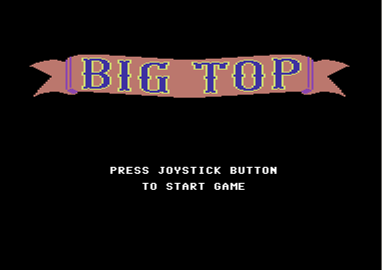
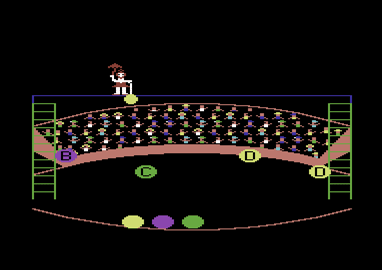
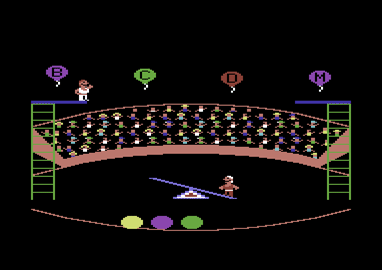
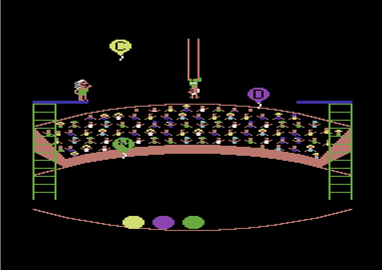
Todd Marshall: I'm pretty sure Henry programmed that game. The 'attract' music is my original composition (and has a Charlie Parker lick in it). The other music is from the second side of Danny Kaye's "Merry Andrew" soundtrack, which was a very hard soundtrack album to find, but the best circus music I knew. It is very interesting music. In fact, all of the music on that soundtrack is pretty good and I was a bit obsessed with it at the time. It was a movie about an Italian circus as well as other things. I think my rendition of the circus music in the "Trapeze" and "Acrobat" sections is fairly good.
The music in Big Top represents an attempt to add delta pitch and delta time to the C-64 music. This is why on Frodo (for the Android) there's a lot of noise and it's garbled. It outputs a lot of differences quickly over time, representing sweeps similar to trombone slides and also changes tone types quickly. The starting music displays a lot of that. There's also a lot of event interruptions to the music during gameplay, and that also distorts the music.
I think
Robin's graphics are interesting on Big Top, but we were a bit demoralized after Pet Person. I don't know how Big Top and Street Sports relate, either.
Q: Were there any other released titles you worked on?
Todd Marshall: I think we had something to do with the Colecovision but I don't know what. You'll have to ask the others.
Henry probably did the bulk of the game programming. His games were Word Zapper, probably Eggomania, most of Name This Game, Tarzan, Little Computer People, probably most of Death Star Battle, Squeeze Box,...
Q: Some of the paperwork I archived for you are specs for GCC's 7800 (aka 3600). Was there any development done for it as far as games or tools?
Todd Marshall: We developed a lot and had inside info, and Tom, Roger, and Wes were hardware guys who were developing custom carts.
Q: With your games, were there any features you would have liked to added, or any known bugs or glitches that gave you trouble (or never got resolved)?
Todd Marshall: The best way to answer this for me, is that we always get better if we keep working; improvements can always be made. More music, better sounds, but a major improvement in games was scrolling.
Q: Besides Pursuit of the Pink Panther and Tarzan, were there any games or projects that you worked on that ultimately never got released or even finished?
Todd Marshall: There was a 3-D space game that I was working on (Ed: referred to as 3-D Zapper in company memos). There was a debate at JWDA about 3-D. I was into my Nimslo camera at the time (took a lot of 3-D lenticulars on a trip to Brazil). For some reason, Jim was thinking about making a 3-D game. I don't remember why. When I quit, I was thinking of presenting the 3-D game idea and the second of those carts has a 3-D gun and 3-D enemies and hit detection:
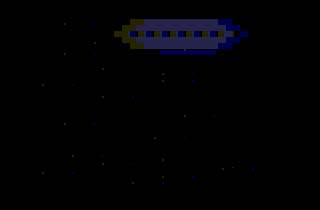
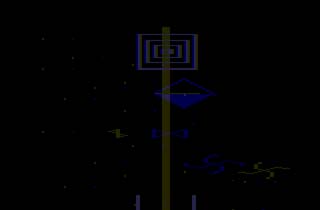
I should've worked harder or moved to California and worked there! There seems to be so much more opportunity there. I think the 3-D is because we were working on a flight simulator for the Etch-A-Sketch Animator-2000.
I also made a music performance
cartridge for the VCS, for doing demos. It plays different VCS music when you flip the TV Type switch and press the fire button. Again, the VCS sound quality was unique, they tried to emulate it on the 5200 and the result was tinny! Another program I have, labeled "Euro Gen", displays a color chart and probably was just a European (PAL) color mapper or something like that.
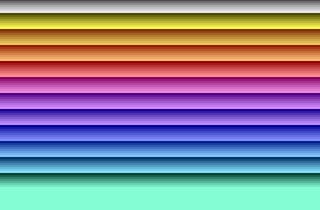
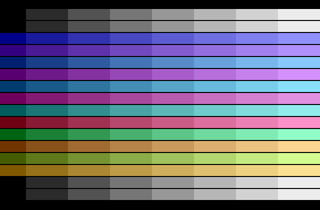
Q: It's too bad you never finished your 3-D game. Besides Atari, there were at least 3 other companies that had done some work on 3-D games for the VCS - Activision, Amiga (VideoSoft), and Spectravision - but none of them ended up releasing them. Do you recall any other titles that other programmers were working on that were never released, or finished?
Todd Marshall: Tarzan was a very important game that Henry dedicated a large part of his life to (at work).
Q: Getting back to Montezuma's Revenge for a moment, do you recall who programmed the VCS version? And did JWDA do the Colecovision, Commodore 64, Sega Master System, and/or Sinclair ZX Spectrum versions?
Todd Marshall: JWDA bought the rights to Montezuma's Revenge and modified and 'developed' the game. The original game had a big Montezuma who stomped when you got to him, and shook things up. That's what I remember and that was the best version of the game that I recall, which could be wrong of course. Henry probably worked on some versions; VCS, C-64, etc. I don't remember all or which platform the original was done on.

Andrew Bergman (creative executive with connections), Roger Booth, James (Jim) Wickstead, Robin McDaniel Ballweg, Henry Will IV, and Todd Marshall.
Photo from Activision's Little Computer People magazine.
Q: What were some of your experiences working for JWDA? Any stories or anecdotes from those days that you recall?
Todd Marshall: We were various forms of old hippies - less so for Roger, but Henry was straight and religious. I was part of the new crew of programmers, after the Kitchen brothers left. Henry pretty much developed the gameplay and graphics system that we'd use over 10 games or so; they use much the same system, and I tried to improve the audio system with each successive game. But sometimes memory would get tight and I might have to cut down. The company included industrial designers who developed the initial hand-held calculators, and also some other toys. I worked on a piece of computerized jewelry and some kind of toy gun. I left in the middle of working on a cartridge for the Ohio Art Etch A Sketch Animator 2000, unfortunately. Some of the folks from JWDA went to Acclaim Entertainment, in NJ. JWDA is still around but Jim will probably retire soon. Another interesting fact - they started with a red LED game called WildFire (LINK) that was released by Parker Brothers.
One thing I remember about JWDA is that when a game used a Kaboom! design, it was considered just a 'knock-off' cheap trick. JWDA games could be characterized (by me) as a two-sided conflict. First, the need to make VCS games that made money (commercial forces) = management point of view. Second, the desire to do original art, music, and gameplay, on the part of the 'workers'.
So we had Robin for art, myself for music, and Roger, Wes, and Henry (and Sylvia to some extent) for gameplay. Mouse Trap and Gopher were Sylvia's projects. Gopher came after Mouse Trap, and it has Robin's graphics and my audio, and is yet another variation (with Name This Game/Octopus, and Eggomania), on adding elements to the Kaboom! vertical-horizontal elements. Sylvia had that project, with Roger and Henry helping. The problem with Gopher is probably that the farmer slides in a constant fixed way sideways without acceleration, which is not fluid and is frustrating; it causes carpal tunnel syndrome. But the game is entertaining anyway. Sylvia was a woman who was way ahead of her time. I wish I knew her better, looking back, but that felt difficult at the time.
Looking back, I don't consider JWDA's VCS games as playable or as successful as some others for that system.
Q: Why do you think that was? Certainly the early games could have used more gameplay tweaking, but that's often true with anybody's early efforts. Later releases like Star Wars: DSB, Smurf, and Pink Panther are very playable, 'high caliber' games IMO.
Todd Marshall: I can think of two practical reasons. First, you should never disallow the player to move his piece. Freezing the player's paddle or whatever, for any length of time, causes carpal tunnel syndrome and frustration. Secondly, our games often had larger and more elaborate graphics crammed into 4K with the game code. Other games had smaller players, so the space seemed larger, and often the graphics were more algorithmically computed, which means more code for gameplay was available.
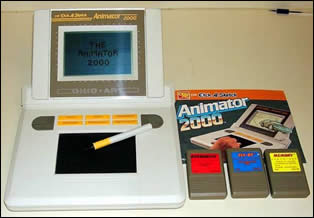 Q: What do you recall about the Etch A Sketch Animator 2000? From what I know about it, only 4 cartridges were made - Fly
By (the flight simulator mentioned earlier), Overdrive, Putt-Nuts, and Memory.
Q: What do you recall about the Etch A Sketch Animator 2000? From what I know about it, only 4 cartridges were made - Fly
By (the flight simulator mentioned earlier), Overdrive, Putt-Nuts, and Memory.
Todd Marshall: The hardware and software were all JWDA products. This could've been great, but the software on it, what it did, was not carefully done, and the financial interests pushed it out the door before completion. A product like that needs inspired refinement. However, the financial interests often push out a crappy product that is destined to fail.
I worked on Fly-By, which was a flight simulator; I should've stayed and finished it but I left early and Wes finished it.
Q: Can you talk a bit about your time in the industry after leaving JWDA?
Todd Marshall: After leaving JWDA, I coded a Turbo Pascal software program for Grahame Weinbren's Sonata, which was an interactive film setup to perform in museum settings (interactive video art), from 1991 to 1993. It controlled 3 serial-controlled Pioneer laserdisc players, and used an early touchscreen device with a video mixer and graphics overlays. His first piece was The Earl King, but the one I worked on, Sonata, was about a censored Tolstoy story, abstinence and rage, paintings of the beheading of Holofernes by Judith, and related things such as Chopin. My program controlled segments of audio/video according to areas on the screen from 3 mixed random access sources, via an early touched overlay device, so he could relate various art works together with computer mixing and user touching. I spent about a year on it on-and-off as a contract programmer, for Weinbren's Black Maria company. I think the entire piece was perhaps sold to some museum.
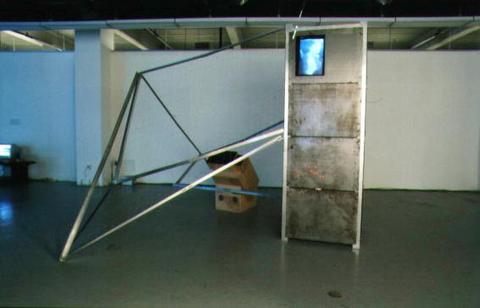
Here's what the Sonata display looked like. See this site for more photos and info.
After that, I worked at Sesame
Street (CTW). The artists and sound designers were stars there, and I was the technical director from 1992 to 1998. I worked as an 'engine' programmer, handling the asset libraries, compression, and scripting language development. The games featured Elmo, Cookie Monster,
Grover, etc. and were all Windows and Power/Classic Mac CD-ROM-based. The Sesame Street games I worked on were:
Elmo's Deep Sea Adventures (2000 - I left when it was being developed)
Elmo's Preschool (1998)
Elmo Through The Looking-Glass (1998)
Get Set To Learn! (1996)
Grover's Travels (1998)
Let's Make A Word (1995)
Music Maker (2000 - I think this was one of our best Sesame Street games)
Search And Learn Adventures (1997)
The Three Grouchkateers (1998)
There's footage on YouTube of some of these.
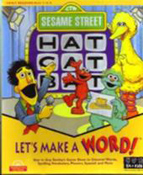
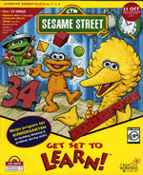
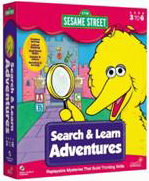
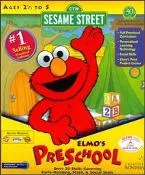
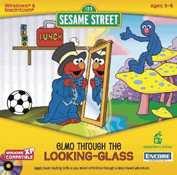
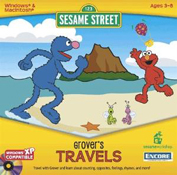
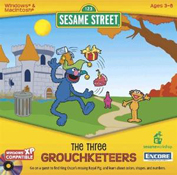
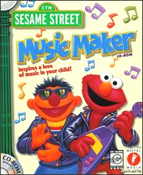
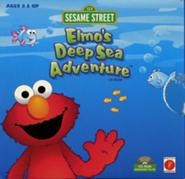
5 years later, though, I spent a few weeks at Majesco Sales fiddling around with Nintendo sound on the GameBoy Advance. My brother, Scott, worked there as well and did a version of Frogger for the GameBoy. Going from JWDA to Majesco was like the complete opposite; I realized how nice people were at JWDA. Advice: when you have a decent company that is nice to you, try to stay there. Take a vacation if you need to, if you get burnt out. It's way too easy to jump out of a comfy frying pan into a fire. Try to grow where you are if that's possible, if you're in a decent position. Try to avoid negativity. I later got involved in FAA messaging for airspace, and then in medical ultrasound live imaging. The game industry is taking over the world! Just try to avoid too much violence. Sex is about love more than anything else (or *should* be)!
Q: Are there Easter eggs in any of your titles? Do you recall any fellow co-workers that put them in their games?
Todd Marshall: There could be, but I don't remember any. I know we didn't even have scrolling credits in a game - what was the first game to have that? Elmo's Preschool has an evil 'c**k' word embedded in it (and not intentional, according to the audio designer) in the Face activity - funny stuff! You can hear it at 4:08 in this video. The game was later replaced and re-issued, so if someone has the original disk with it, it's probably a collector's item!
Q: Did you ever attend any industry shows, such as CES or Toy Fair?
Todd Marshall: I worked at shows like CES as an exhibitor with laser shows in Las Vegas for IBM or ATT with Broadway dancers, and I attended a SIGGRAPH or two. So no, but I should go!
Q: Which of your titles are your favorite, and what types of games in general?
Todd Marshall: Of my (VCS) games, I like Star Wars: Return of the Jedi - Death Star Battle because it's challenging and space-based. Squeeze Box is unusual, as is Q*bert's Qubes. Listening again to Gopher, Eggomania, and Name This Game, I recall the music compositions involved. The Gopher audio is effective - especially the intro music - which has a good flourish at the end of it. The "raspberry" and "duck" are good as well. The Eggomania music and audio is fairly complex, including the sound effects. Even the one-track Squeeze Box music is interesting, because it shifts up and back down chromatically, which seems to heighten the suspense, and of course the devil music shows off the Atari VCS sound generation tone quality. Maybe I feel this way only because I've listened to those things millions of times (and I usually don't brag).
I think that Montezuma's Revenge (the original version by Robert Jaeger on the Atari 400/800) was revolutionary, like Pitfall! was. Same with Zaxxon, which was the first 'isometric' game that I remember. The original Montezuma's Revenge was fantastic and all attempts to improve on it were shortcomings. Like for me the original Space Taxi on the C-64, another of my personal favorites (the first speech digitization on the C-64?). Games with intelligent art and music, and there ought to be more of that. Mathematical challenges like Qix were my favorite, I also enjoyed coin-op Star Castle and C-64 Space Taxi. Some of the story-based Sesame Street games are very good artistically, such as Grover's Travels and The Three Grouchkateers.
Q: What are your thoughts on how the industry has evolved?
Todd Marshall: The decade of the 1980's was hard on people. One engineer, Tom, did not survive. He designed hardware for custom carts, as well as the Fisher Price PXL-2000 and also the Ohio Art Etch A Sketch Animator 2000 hardware. I'm not sure what he was working on when he died, as he was traveling from Japan I think. We did a lot of work at JWDA, but could've done plenty more. That was the decade of Crack and Cocaine (poor and rich), AIDS, boozing, etc.
My career path was bumpy. I quit both JWDA (to get my head together, quit smoking, etc) and also quit Sesame Street at the wrong times for my career. So I'm saying I had a lot of jobs over my almost-40 year career, which makes people suspicious, and I'm too honest for my own good. I've learned for example, if some job prospect interviewer asks you 'why did you leave company X'?, you should never complain about company X or say they were not doing well, because they would implicitly blame you. You should always say 'company X was a great company'; even admitting there was a lay-off is a problem you could be blamed for! I still don't know how to talk about it, and I end up just being honest, which means I often don't get hired for new positions! Part of it may be my philosophical ramblings, I guess. I could get back into games, of course, but my current job would not be happy! I think Garry's current company (possibly with Wes) is close to where I work, north shore Long Island.
I don't know personally if companies like Majesco are dominant now or whether they've become more humanistic. In NYC, there were some pretty decent people doing games. I hope the marketplace for developers is healthy, and that games keep improving. I'm never sure if Microsoft is worth bothering with. What I like about the open source movement is that when something does not work, it is replaced quickly by new libraries, systems, etc. Google seems to be a great company with their development of V8. So you see, I'm more on the systems side rather than the game design or art side. The best company I worked for was Sesame Street, but their games kind of fizzled after I left, and I wish they'd get a new wind in their sails because they were incredibly good to artists, musicians, and programmers also for a while in the 90's.
The most important thing is the players who are also learning technology, pushing their limits, having fun,
and evolving. People who study and learn games are interested in both the challenges of the original Atari systems and the artistic side of games! I really think people who study old game systems are amazing! The fact that people play games now everywhere on their smart phones is great. I'm kind of 'played out' but I'm interested in working on new 'paradigm' games. There's always a new game to invent.
As an added bonus, Todd Marshall is allowing me to make his extensive cache of development materials freely available for everyone on the condition that the programs are NOT to be sold by anyone, in any form. Enjoy!
Atari VCS prototypes
Atari 8-bit prototypes
C-64 prototypes
TI-99/4a Frogger prototypes
JWDA source code listings:
Alpha Sound Jan 4, 1985
(C-64)
Alpha Sound 1 Jan 28, 1985 (C-64)
Alpha Sound 2 Jan 28, 1985 (C-64)
Apple music
Apple sound
Apple sound 2
Apple sound 9-3-85
Apple sound 9-13-85
Big Top sound 2/85 (C-64)
Frogger (TI-99/4a)
Frogger 11-15-83 (TI-99/4a)
Frogger tune (TI-99/4a)
Garry Kitchen's GameMaker (Apple II)
IBM printer (C-64)
misc
muse 12 1-28-85
music editor
music Jan 2
Pet Person 10-19-84
piano
printer for IBM
Q*Bert's Qubes 6-4-84 (VCS)
Q*Bert's Qubes 7-30-84 (VCS)
Q*Bert's Qubes sound (VCS)
Todd also sent me 3 of Henry Will IV's notebooks to archive:
Henry Will notebook #1 - 11-23-81 to 10-21-83
Henry Will notebook #2 - 10-24-83 to 6-30-86
Henry Will notebook #3 - 7-1-86
| GAME | SYSTEM | COMPANY | STATUS |
| music utility | Atari VCS/2600 | JWDA | unreleased |
| Euro Gen utility | Atari VCS/2600 | JWDA | unreleased |
| Word Zapper | Atari VCS/2600 | U.S. Games (JWDA) | released |
| Commando Raid | Atari VCS/2600 | U.S. Games (JWDA) | released |
| Eggomania | Atari VCS/2600 | U.S. Games (JWDA) | released |
| Squeeze Box | Atari VCS/2600 | U.S. Games (JWDA) | released |
| Name This Game | Atari VCS/2600 | U.S. Games (JWDA) | released |
| Gopher | Atari VCS/2600 | U.S. Games (JWDA) | released |
| 3-D Zapper | Atari VCS/2600 | U.S. Games (JWDA) | not completed |
| Q*bert's Qubes | Atari VCS/2600 | Parker Bros. (JWDA) | released |
| Star Wars: Return of the Jedi - Death Star Battle | Atari VCS/2600 | Parker Bros. (JWDA) | released |
| Mouse Trap | Atari VCS/2600 | Coleco (JWDA) | released |
| Smurf: Rescue in Gargamel's Castle | Atari VCS/2600 | Coleco (JWDA) | released |
| Tarzan | Atari VCS/2600 | Coleco (JWDA) | unreleased |
| Pursuit of the Pink Panther | Atari VCS/2600 | NAP/Probe 2000 (JWDA) | unreleased |
| Frogger | TI-99/4a | Parker Bros. (JWDA) | released |
| Garry Kitchen's GameMaker | Apple II | Activision (JWDA) | released |
| Little Computer People | C-64 | Activision (JWDA) | released |
| Big Top | C-64 | JWDA | unreleased |
| Fly-By | Etch A Sketch Animator 2000 | Ohio Arts (JWDA) | released |
| Grahame Weinbren's Sonata | museum display | Black Maria | displayed |
| Let's Make A Word | PC/Mac | Sesame Street (Electronic Arts/CTW) | released |
| Get Set To Learn! | PC/Mac | Sesame Street (Creative Wonders/CTW) | released |
| Search And Learn Adventures | PC/Mac | Sesame Street (Creative Wonders/CTW) | released |
| Elmo's Preschool | PC/Mac | Sesame Street (Creative Wonders/CTW) | released |
| Elmo Through The Looking-Glass | PC/Mac | Sesame Street (Creative Wonders/CTW) | released |
| Grover's Travels | PC/Mac | Sesame Street (Encore Software/Sesame Workshop) | released |
| The Three Grouchkateers | PC/Mac | Sesame Street (Encore Software/Creative Wonders) | released |
| Music Maker | PC/Mac | Sesame Street (Mattel Media) | released |
| Elmo's Deep Sea Adventures | PC/Mac | Sesame Street (Mattel Media) | released |